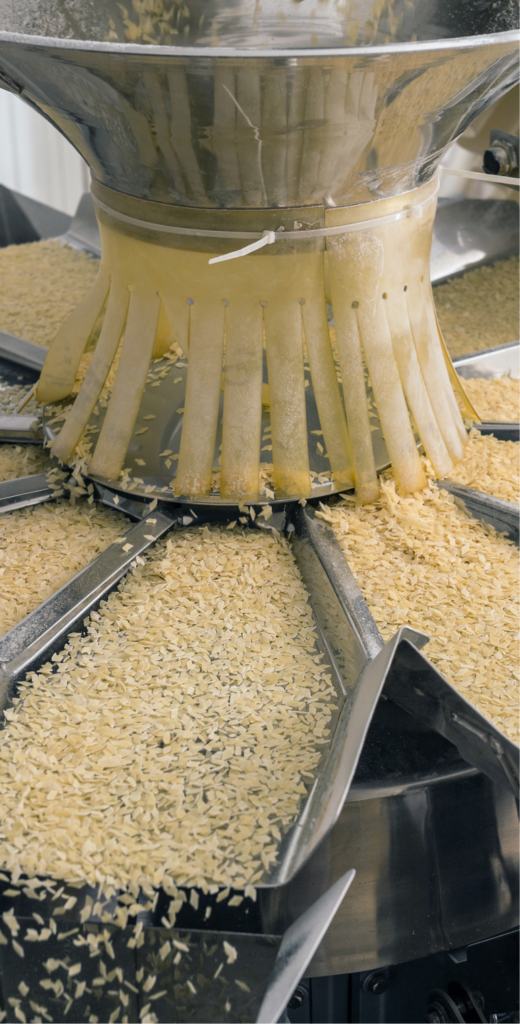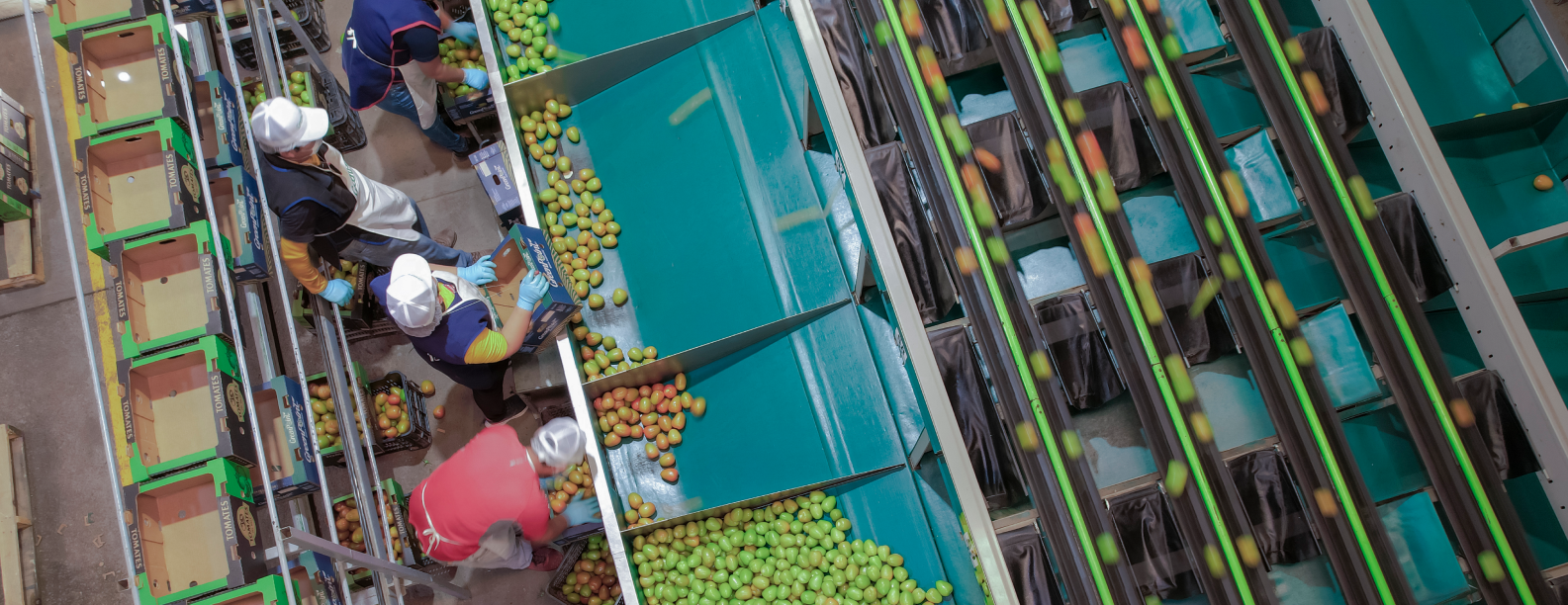

What is the functionality of the food process industry?
“Food processing” refers to any method used to transform an agricultural fruit or vegetable into food form with the mean for distribution to grocery stores, restaurants, or any business. In simple terms is the process of modifying one food item into another form.
There are different vital methods for the transformation of food to happen successfully. These techniques are used to guarantee food safety, provide convenience, for food preservation, affect nutritional value, improve taste, and reduce the price of these goods.
Methods used in food processing include cooking, drying, smoking, fermenting, pickling, freezing, adding chemical additives to extend shelf life, using food choppers, and other processes.
Productivity in food processing
To develop a sustainable business operation there are several steps to follow. From the inside processes, the functionality of the supply chain, and the internal operation to the external parts of the business like suppliers, delivery methods, etc.
Sacrificing product quality or output is not a viable option for the optimization of processes. To prioritize efficiency, there are many paths to take, whether it is through the improvement of equipment, tools, research, technologies, or the optimization of the workforce. Also, considering the strict regulatory policies, the need for transparency across the supply chain and inside the food industry is crucial for creating an efficient business strategy.
Starting with tightening quality-control policies, the industry must employ the necessary systems, tools, and policies that call for strict quality control. For example, temperature and climate control systems can help monitor the quality of the produce as well as ensure the lifespan of the fruits and vegetables. In addition, having control over temperature can help with controlling potential contaminants and secure the quality of produce. Lastly, use the appropriate uniform to avoid taint, assure personal security and prevent hygiene aspects for sanitation.
Another important factor to consider is workflow efficiency. To create improvements in existing processes is important to incorporate technology and better organization in the workflows. A great way to start this improvement is by creating maps of the current workflow so the visibility is better and easier to understand how to efficiently improve it.
Once having the areas of improvement is important to research what parts of the process can become digital. Automation software, equipment, or other forms of digital tools can take the place of manual processes. This will improve time, precision, and overall efficiency.
Analyze, anticipate and adapt
Something that created an urgent need in businesses around the globe was the COVID-19 pandemic. Food consumption shifted completely, restaurants had to adapt their services and delivery systems among other basic functions of the business.
The process of agriculture, food consumption, production, and distribution changed completely, bordering on this sector to make adjustments in their business structure. When talking about the food processor business, factors like hygiene restrictions, timing, and variety of fruits and vegetables by suppliers, restrictions of distribution, among other aspects, affected directly how the workflow of this area worked.
Predicting a global pandemic might not be that easy. However, anticipating business trends by researching mega-trends and analyzing how this can have an impact on your company might prepare you for future adaptations. As a result of preparing beforehand, you can upgrade processes, amplify and diversify your offer of products and services as well as become a company with the quality of being versatile, flexible and that is capable of adapting to change.
Another important factor to consider when anticipating risks is giving your business the necessary tools to survive any possible risks. Predictive maintenance for equipment saves both time and money by telling you when equipment is about to break down and having enough time to take care of it before it turns into an obstacle. For example, if your refrigerator stops working this would create a domino effect, impacting your inventory and final products. Creating regularity in equipment maintenance will prevent sudden failures, preventing losses of produce.

Sustainability in the food processing industry
As time passes and the effects of the food industry start to affect the environmental state of the world the supply chain needs to adapt to the new business and environmental needs. Exploring innovative ways to minimize food production’s environmental impact while continuing to produce food, and processed food products, and increasing the planted goods to a large capacity is a task that every big player in the food industry should be involved in.
Some of the top picks for simple ways to reduce the carbon footprint are using environmentally friendly packaging, reducing food waste, and using green energies for production such as solar panels.
Other actions for achieving a productive system are auditing, certifications, and training. These services enable food processors, manufacturers, and any business inside the food industry to reduce their environmental impact.
An important part of effectiveness is avoiding and reducing waste. The challenge of achieving a balance between under and overstocking warehouses and also managing spoilable products with an estimated short span of shelf life can be an ambitious goal to achieve. Using digital management tools with the ability of smart organization helps visualize stock turns and implement real-time updates. The help of digital tools can improve the analysis of data, storage of produce, and selling strategies.
The workforce in the food industry
Having a team equipped with the necessary abilities to improve efficiency and productivity is a must. From quality in the process to distribution and incorporating tech in businesses, the human force is essential for a successful workflow.
For example, one of the main factors in food contamination comes from negligence. Taking steps like food safety training and adding protocols are vital for the development of any food processor business.
Although incorporating technology into the development of the workflow can increase the effectiveness of the process, if the team is untrained this machinery may not be effective and it can even be less productive to incorporate it without a capacitated staff. For this, it’s crucial to ensure that the team is properly trained and qualified for the improvement of the business.
Do some research to ensure what are the necessary skills to use the new technologies, methods, and forms of operating the business. Consider some of the time inside the scope of your team to improve their skills and train them correctly. Also, when incorporating tech or new methods, ensure you look for a supplier or company that offers after-service training.
A clean space is a clean mind
Due to the nature of the food industry, having a space that’s dirty, disorganized, and messy can contribute to a high potential for contamination and other problems. Clutter is related to low productivity, affecting operations, and the work environment. It’s important to ensure the environment is clean and organized to maintain the workplace functional.
Some ways to prioritize organization can be eliminating unnecessary gear, tools, packages, or equipment in an area. Have a regular schedule to organize and clean materials, equipment, document, furniture, etc. Lastly using software to improve inventory organization can be helpful to have everything in order.
Transformation in the food manufacturing business
There are different ways to diversify your products and look for growth in the food industry. Food processing is a very diverse area of the food industry. One of the most popular rising areas is the jam and jelly business as well as the canning of fruits and vegetables.
Jam is a very popular choice of food, usually combined with pastries, this delicious product can also be used in bread and with cheeses. Creative flavors of jams are in high demand and very easy to make and package. You can make jam out of almost all types of fruits and also at a low cost.
Canning is an old but very effective way to preserve fruits and vegetables. With a high shelf life, these products can preserve the freshness and taste of produce, being one of the best processing methods for preservation.
Using and applying these techniques may help boost your efficiency and productivity as well as expand your business. Try to take into consideration the resources available to you and what can be applied to your company. If some of these tips are out of your scope, try to start by applying some of the simpler techniques to improve your business.

